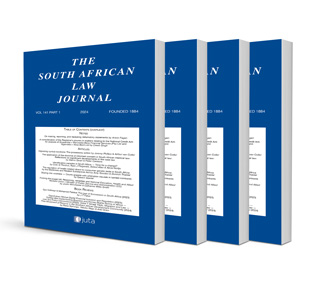Pledge, conditional sales and the pledgor’s right to redeem: Mapenduka v Ashington and Graf v Buechel revisited

NOTES
Pledge, conditional sales and the pledgor’s right to redeem: Mapenduka v Ashington and Graf v Buechel revisited law
Author: Kevin Mulligan
ISSN: 1996-2177
Affiliations: Arbitrator and Consultant, Johannesburg
Source: South African Law Journal, Volume 142 Issue 1, p. 1-13
https://doi.org/10.47348/SALJ/v142/i1a1
Abstract
The principle that, in pledge, the debtor has the right to redeem the pledged property by paying the debt, even after default and up to the moment that the property passes into the ownership of another upon realization, was affirmed in 1919 by the Appellate Division in Mapenduka v Ashington. However, in 2003, some doubt emerged as to whether the principle applies in the context of the conditional sale, which has long been regarded as a valid alternative to the invalid pactum commissorium. This doubt arose due to interpretations of a somewhat cryptic obiter dictum in Graf v Buechel to the effect that Mapenduka should not be seen as authority for the proposition that the debtor should still be willing to proceed with the sale after default. This note examines these dicta in their correct doctrinal context and proposes an interpretation of the Graf dictum that reconciles the apparent conflict between the two.